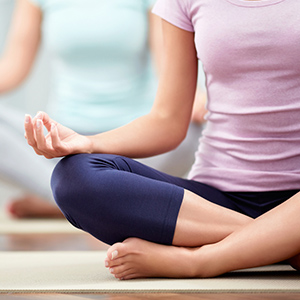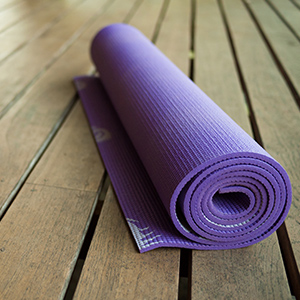As an amputee, you can still live a happy, rewarding, and purpose-filled life. But as longtime prosthetic professionals, we know it’s not always going to be easy. And sometimes it’s going to be hard. Very hard. But, if you have a can-do attitude, we know you’ll be amazed at how far you’ll get and what you’ll be able to do.
One thing that can help you keep a healthy mind and body is yoga. Yes, even with a prosthetic you can do yoga. In fact, we recommend it.
Yoga is an ancient healing practice
Yoga is a powerful way to stretch and strengthen the body, but even more, it’s about relaxing and calming the mind, enhancing energy and lifting the spirit. This system of holistic health and spiritual growth began five thousand years ago in India.
The belief is that physical ailments, like the leg you are missing, also have emotional and spiritual components.
People who practice yoga use postures, breathing practices, and meditation — all of which work together to balance and connect mind, body, and spirit. Yoga does mean union after all.
Many types of yoga exist. The one most common in the West is Hatha yoga, which teaches you how to relax and release tension, as well as how to strengthen weak muscles and stretch tight ones.
Yoga benefits for people with prosthetic legs
While everyone is unique and individual benefits vary, the following are some ways in which yoga may be good for you. These are based on the experience of other amputees who chose yoga as a ongoing practice.
Yoga can help you reduce stress and deal with pain. When you take yoga classes, you will be taught different breathing techniques. These specific ways of breathing can be great tools to use when you are in pain. They can help you calm down and deal with the pain in a healthy way.
You will likely become more aware of your body parts and more aware of yourself as a whole — even without your leg. Back pain may be a problem for you, and yoga can ease this type of pain.
Yoga can help improve your strength and flexibility. Studies suggest that yoga can help strengthen musclesand increase flexibility.
Yoga can help keep your joints healthy. By exercising regularly, you can help avoid further damage and keep your joints healthy.
Yoga can help increase your body’s alignment. Sometimes people with prosthetics favor one leg over the other. Doing so throws off your body’s alignment. You may be limping without realizing it, but yoga can give you more awareness and help you feel more comfortable in your body.
Yoga can help you keep a positive outlook. As an amputee, it can be easy to fall into the “poor me” trap. Yoga will help you relax and be at peace with yourself and your condition.
The different poses promote an awareness of positive feelings in the body and will allow you to observe your pain with a neutral mind. In this way, pains hold on the body can be diminished.
Try to do it, you will gain a lot.
Post time: Oct-31-2021


